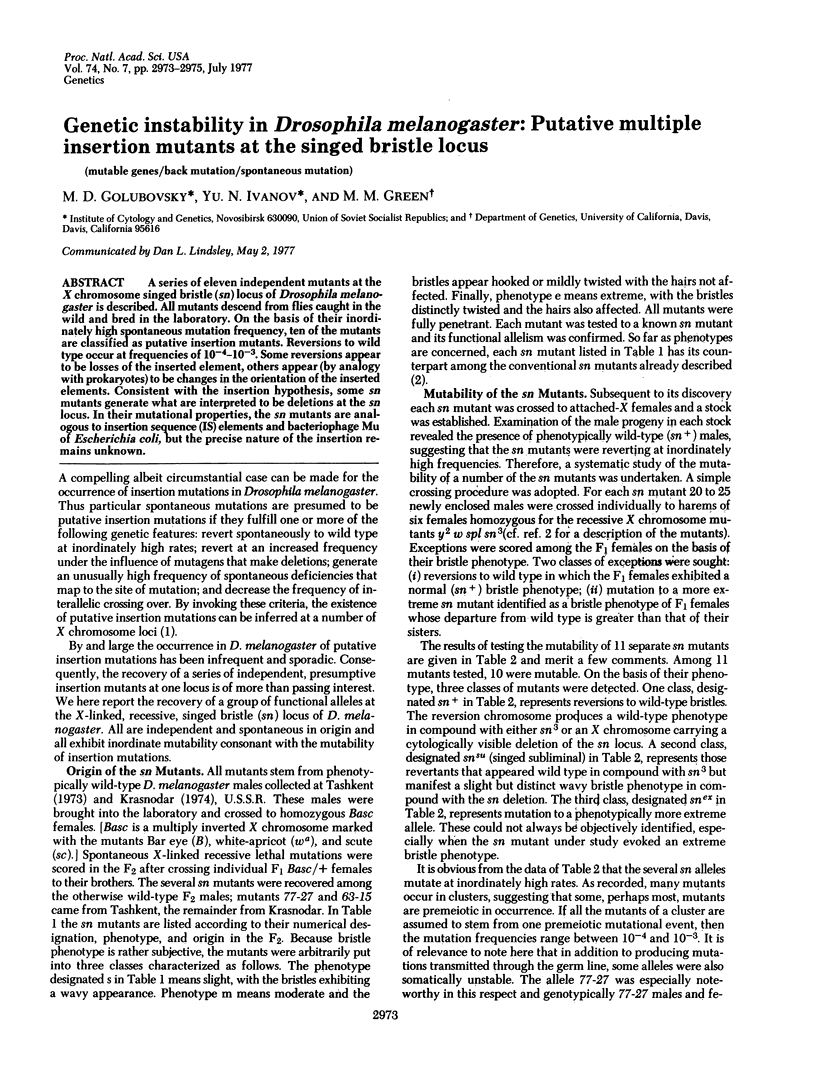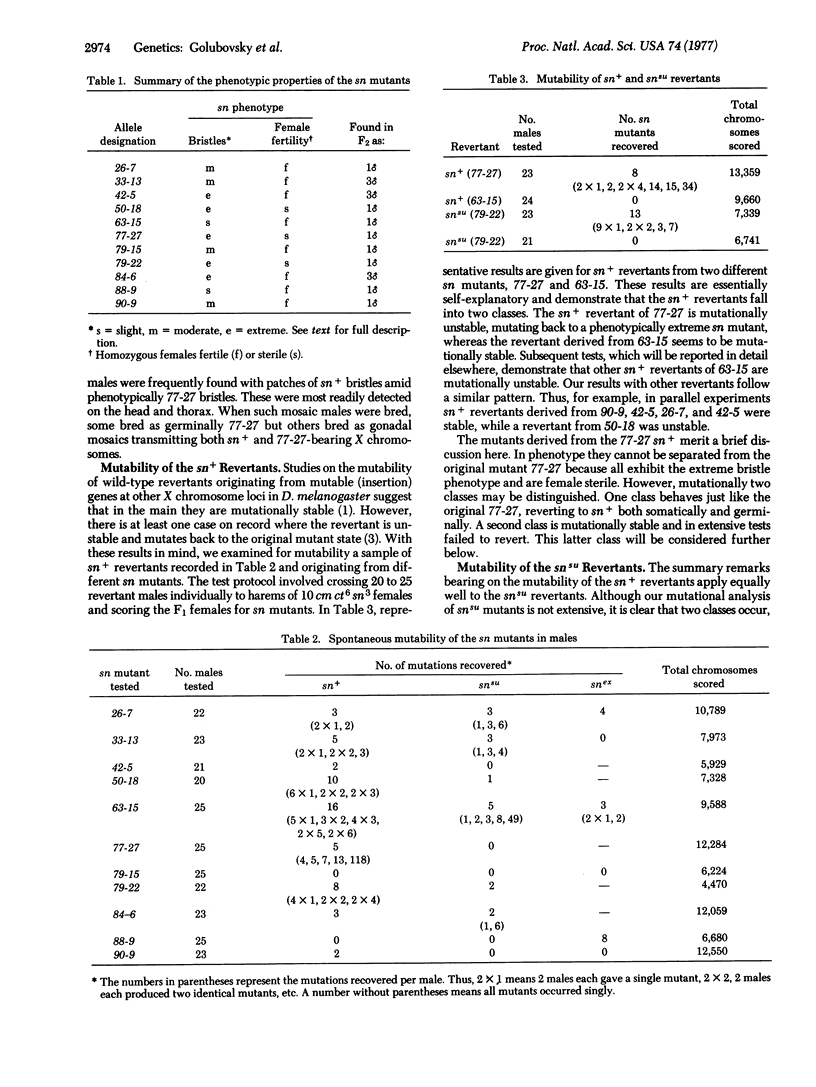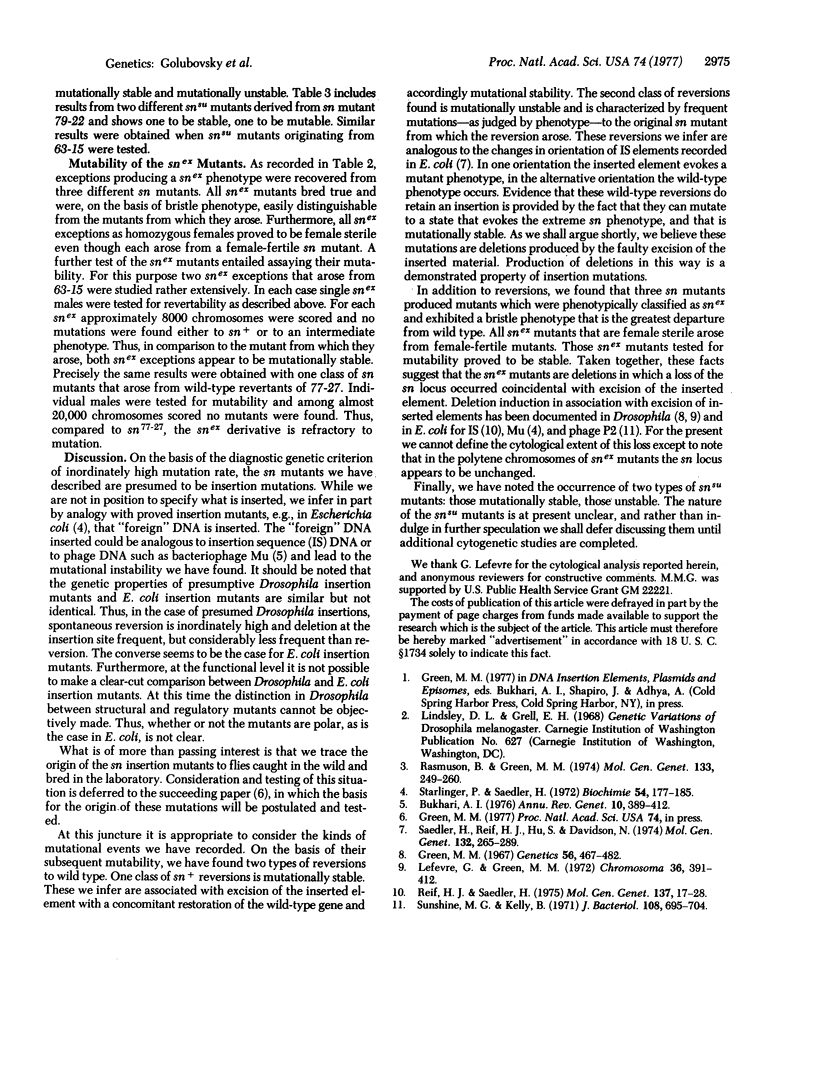Abstract
A series of eleven independent mutants at the X chromosome singed bristle (sn) locus of Drosophila melanogaster is described. All mutants descend from flies caught in the wild and bred in the laboratory. On the basis of their inordinately high spontaneous mutation frequency, ten of the mutants are classified as putative insertion mutants. Reversions to wild type occur at frequencies of 10(-4)-10(-3). Some reversions appear to be losses of the inserted element, others appear (by analogy with prokaryotes) to be changes in the orientation of the inserted elements. Consistent with the insertion hypothesis, some sn mutants generate what are interpreted to be deletions at the sn locus. In their mutational properties, the sn mutants are analogous to insertion sequence (IS) elements and bacteriophage Mu of Escherichia coli, but the precise nature of the insertion remains unknown.
Full text
PDF


Selected References
These references are in PubMed. This may not be the complete list of references from this article.
- Bukhari A. I. Bacteriophage mu as a transposition element. Annu Rev Genet. 1976;10:389–412. doi: 10.1146/annurev.ge.10.120176.002133. [DOI] [PubMed] [Google Scholar]
- Green M. M. The genetics of a mutable gene at the white locus of Drosophila melanogaster. Genetics. 1967 Jul;56(3):467–482. doi: 10.1093/genetics/56.3.467. [DOI] [PMC free article] [PubMed] [Google Scholar]
- Lefevre G., Jr, Green M. M. Genetic duplication in the white-split interval of the X chromosome in Drosophila melanogaster. Chromosoma. 1972;36(4):391–412. doi: 10.1007/BF00336795. [DOI] [PubMed] [Google Scholar]
- Rasmuson B., Green M. M. Genetic instability in Drosophila melanogaster. A mutable tandem duplication. Mol Gen Genet. 1974;133(3):249–260. doi: 10.1007/BF00267674. [DOI] [PubMed] [Google Scholar]
- Reif H. J., Saedler H. IS1 is involved in deletion formation in the gal region of E. coli K12. Mol Gen Genet. 1975;137(1):17–28. doi: 10.1007/BF00332538. [DOI] [PubMed] [Google Scholar]
- Saedler H., Reif H. J., Hu S., Davidson N. IS2, a genetic element for turn-off and turn-on of gene activity in E. coli. Mol Gen Genet. 1974;132(4):265–289. doi: 10.1007/BF00268569. [DOI] [PubMed] [Google Scholar]
- Starlinger P., Saedler H. Insertion mutations in microorganisms. Biochimie. 1972;54(2):177–185. doi: 10.1016/s0300-9084(72)80102-0. [DOI] [PubMed] [Google Scholar]
- Sunshine M. G., Kelly B. Extent of host deletions associated with bacteriophage P2-mediated eduction. J Bacteriol. 1971 Nov;108(2):695–704. doi: 10.1128/jb.108.2.695-704.1971. [DOI] [PMC free article] [PubMed] [Google Scholar]


